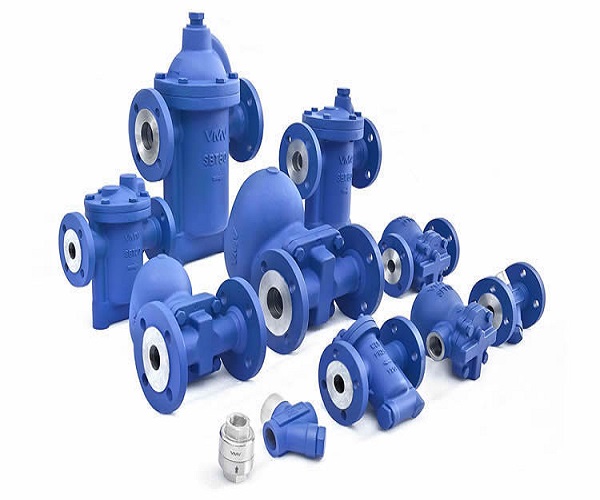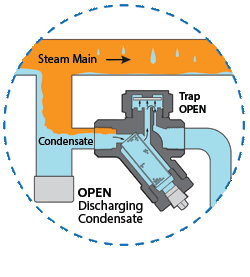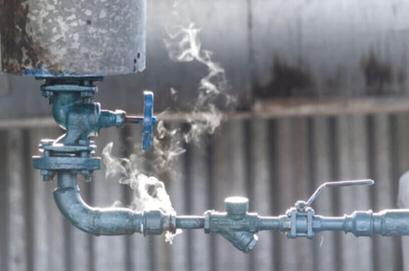
A steam trap is an automatic valve that filters condensate steam and non-condensable gases without allowing steam to escape from the filtrate. Steam provides a driving force for mechanical power and regularly heats the system in industries.
What Is A Steam Trap?
A steam trap is a self-contained valve that allows automatic condensate drainage from the system without permitting steam to escape. It also adjusts or controls the passage of gases through condensate. It remains tight to live stream; it also traps several non-condensable gases. The opening, closing, and modulation of a steam trap are performed automatically. A steam trap is placed at 50-150 degrees to a straight pipe, after all, heat exchangers, and at all the locations where pressure elevation occurs. It protects the system from corrosion, pressure damage, drainage issues, and other problems. Always choose the right size and type of steam trap to meet your industrial requirements.

Why Do We Need A Steam Trap?
When water vaporizes to form a gas, it turns into steam. For vaporization, water molecules require high energy to break hydrogen bonds between the molecules. This energy converts a liquid into a gas. This energy is called the “latent heat of water”. This latent heat is used in all steam-based heating processes. When work is done, it converts into condensate. Condensate cannot perform the same work as steam can do. Hence, it affects the heating efficiency of the system. Removing condensate trapped in a heat exchanger or steam transport piping system is necessary. That’s why a steam trap performs its function for removing condensate.

How Does A Steam Trap Work?
The working of a steam trap depends on its type, and a mechanical steam trap works by changes in the fluid density. A thermodynamic steam trap operates by changes in fluid dynamics. A thermostatic steam trap operates by changes in fluid temperature. Any changes in the parameters mentioned above allow the condensate to escape from the system without releasing steam. The opening and closing of valves accurately determine the flow of gases or fluids without escaping steam. Similarly, some non-condensable gases also escape from the system without affecting the working efficiency of the system. Please contact us to find out more about the working of a personalized steam trap!
What Are 4 Types Of A Steam Trap?
- Mechanical Steam Trap:
It operates by gravity. The stainless steel float ball rises and sinks within the trap because of the difference between water and steam. Hence, it opens and closes. It shows a high response rate for condensate flow without being affected by external features.
- Temperature Steam Trap:
It holds condensate until it cools down to allow the opening of the valve. Temperature causes expansion or compression of valves.
- Thermodynamic Steam Trap:
It is suitable for areas where flash steam passes through the valve. It is designed for high pressure, superheated steam, highly vibrated areas, and water hammering areas.
- Venturi Steam Trap:
It continuously removes condensate from the steam system and allows quick passage of condensate from pipelines. It operates at a density difference between steam and water.
What Is The Best Type Of A Steam Trap?
Choosing the wrong type of steam trap can damage the system, produce energy losses, increase downtime, and increase expenditures. The selection of a steam trap depends on industrial applications. However, the mechanical steam trap is the best choice for industrial applications with a high heat transfer rate. It can equally handle heavy and light condensate loads. A sudden fluctuation in flow rate and pressure difference leaves no or little impact on it. It ensures efficient drainage of the condensate through the system. It offers excellent resistance against water hammering, corrosion, temperature changes, and pressure changes. Consult an expert before choosing the right type of steam trap.
What Are The Benefits Of A Steam Trap?
A steam trap is a highly precise automated device for drainage of condensate and non-condensing gases without escaping steam. The most common benefits of a steam trap include:
- Easy to maintain and easy to operate
- Suitable for high-pressure steam system
- Highly durable and accurate automated device
- Withstand critical working environments
- Excellent response rate against changes in condensate load condition
- Require more minor adjustments over time
- Save boiler fuel, including electricity, coal, and gas, up to 30%
- Reduce CO2 emission
- Reduce steam wastage through failed steam traps
- Minimal energy loss
- Save labour cost






